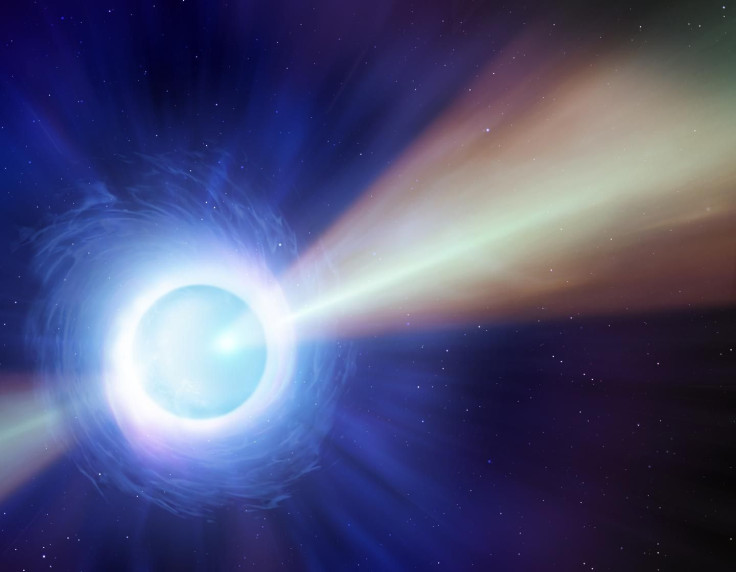First Neutron Star Merger Ever Observed Found Emitting Powerful Beams Of Light

In August 2017, a group of scientists detected gravitational wave signals indicating a merger between two neutron stars some 130 million light-years away from Earth. The event, first of its kind ever to be observed, was confirmed by several ground and space-based observatories and came to be known as GW170817.
Astronomers across the globe focused on the merger to witness the aftermath of a rare event like this. However, within a few weeks from detection, the object in question started fading away behind the glare of our sun, leaving astronomers no choice but to wait. It took more than a hundred days to emerge from hiding, but when it did, astronomers at University of Warwick were quick to analyze the situation in NGC 4993 — the galaxy in which the neutron stars cataclysmic collision occurred.
When the team peered NASA and European Space Agency’s Hubble Space Telescope on the distant galaxy, they found a bright afterglow from the site of the merger. The collided neutron star was producing an immensely powerful beam of light, one which did not directly point to our planet but was starting to spread out in direction.
This beam of light or afterglow, as the researchers described, is the result of a jet of material being streamed out of the neutron star at extremely high-speed. Specifically, it is the first visual evidence suggesting the collision is ejecting powerful material even after 110 days after being observed.
“Early on, we saw visible light powered by radioactive decay of heavy elements, over a hundred days later and this has gone, but now we see a jet of material, ejected at an angle to us, but at almost of the speed of light,” Joe Lyman, the lead author of the study, said in a statement. “This is quite different than some people have suggested, that the material wouldn't come out in a jet, but in all directions.”
According to the team, the observation of this powerful beam and its evolution — increase or decrease in brightness — over time will provide critical insight into the structure of the material being ejected from the neutron star.
“As the afterglow brightens we are seeing deeper into the jet structure and probing the fastest components,” study co-author Gavin Lamb said in the statement. “This will help us understand how these jets of material, traveling close to the speed of light, are formed and how they are accelerated to these phenomenal velocities.”
That said, it is also worth noting the observation of this jet also bolsters the popular theory that gamma-ray bursts are produced from neutron star mergers.
“If we'd looked straight down this beam we'd have seen a really powerful burst of gamma-ray,” Andrew Levan, another author of the study, stated. “This means that it is quite likely that every neutron star that merges actually creates a gamma-ray burst, but we only see a small fraction of them because the jet doesn't line up all that often.”
The study, titled “The optical afterglow of the short gamma-ray burst associated with GW170817,” was published July 2 in the journal Nature Astronomy.
© Copyright IBTimes 2024. All rights reserved.











